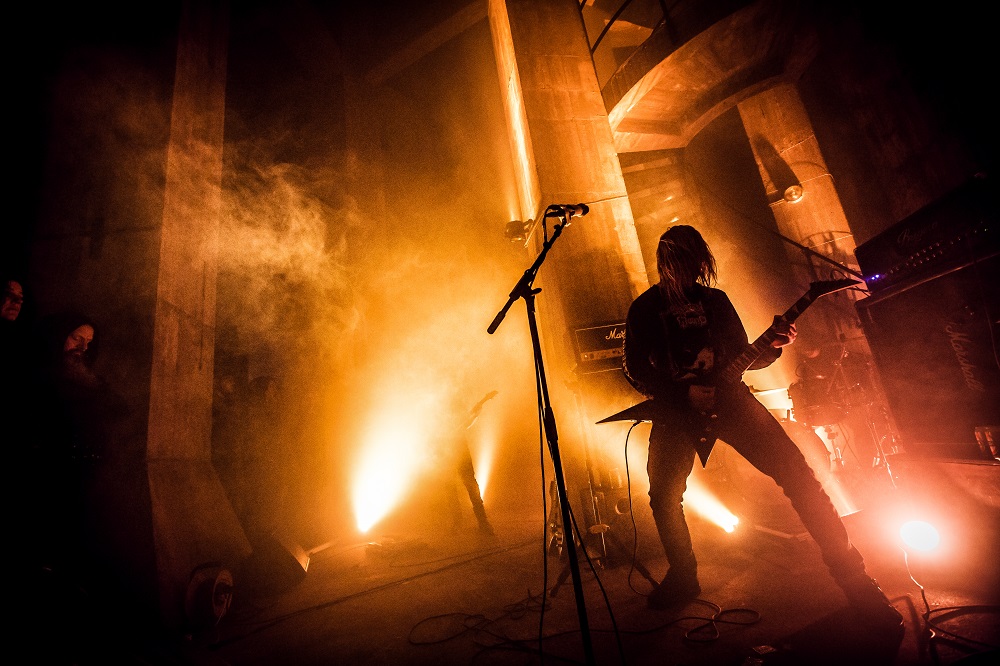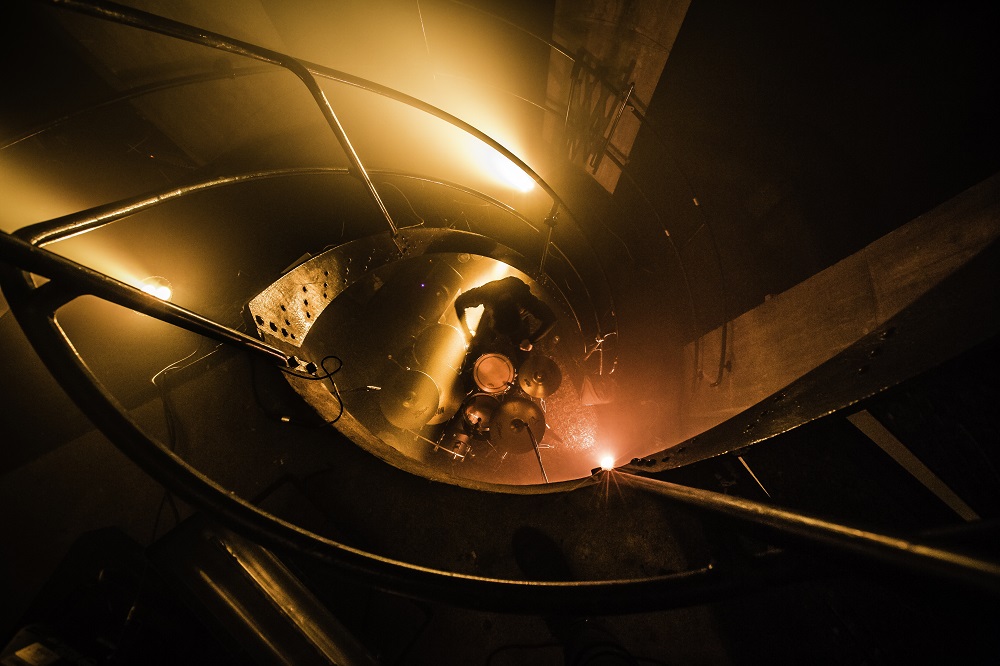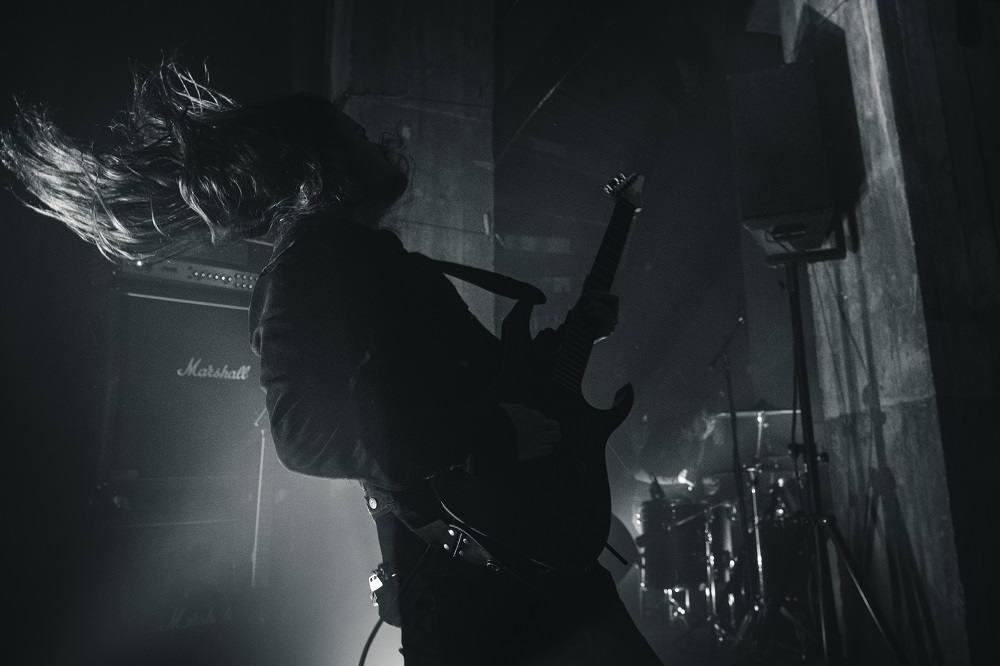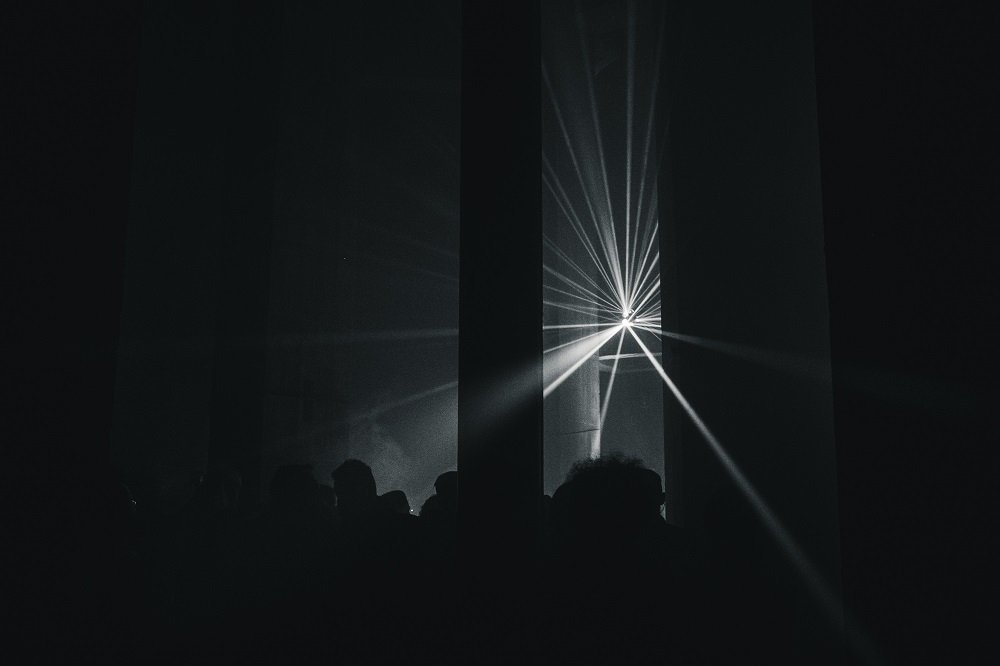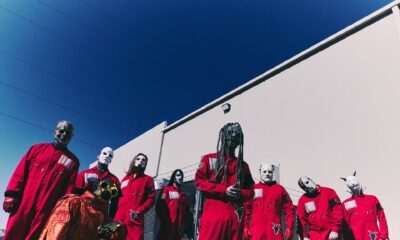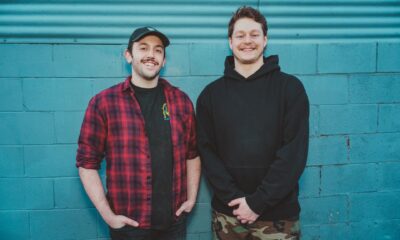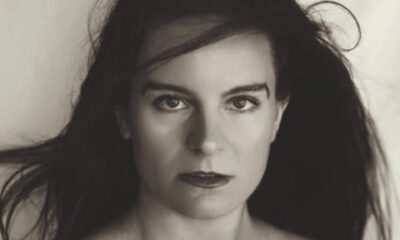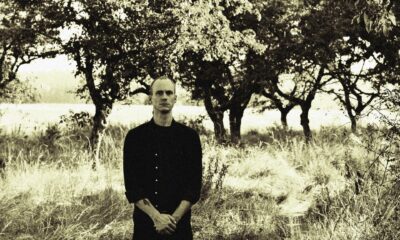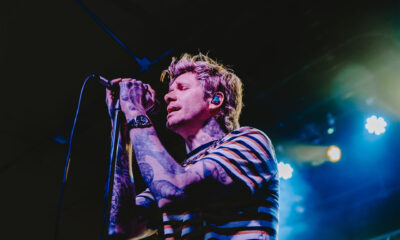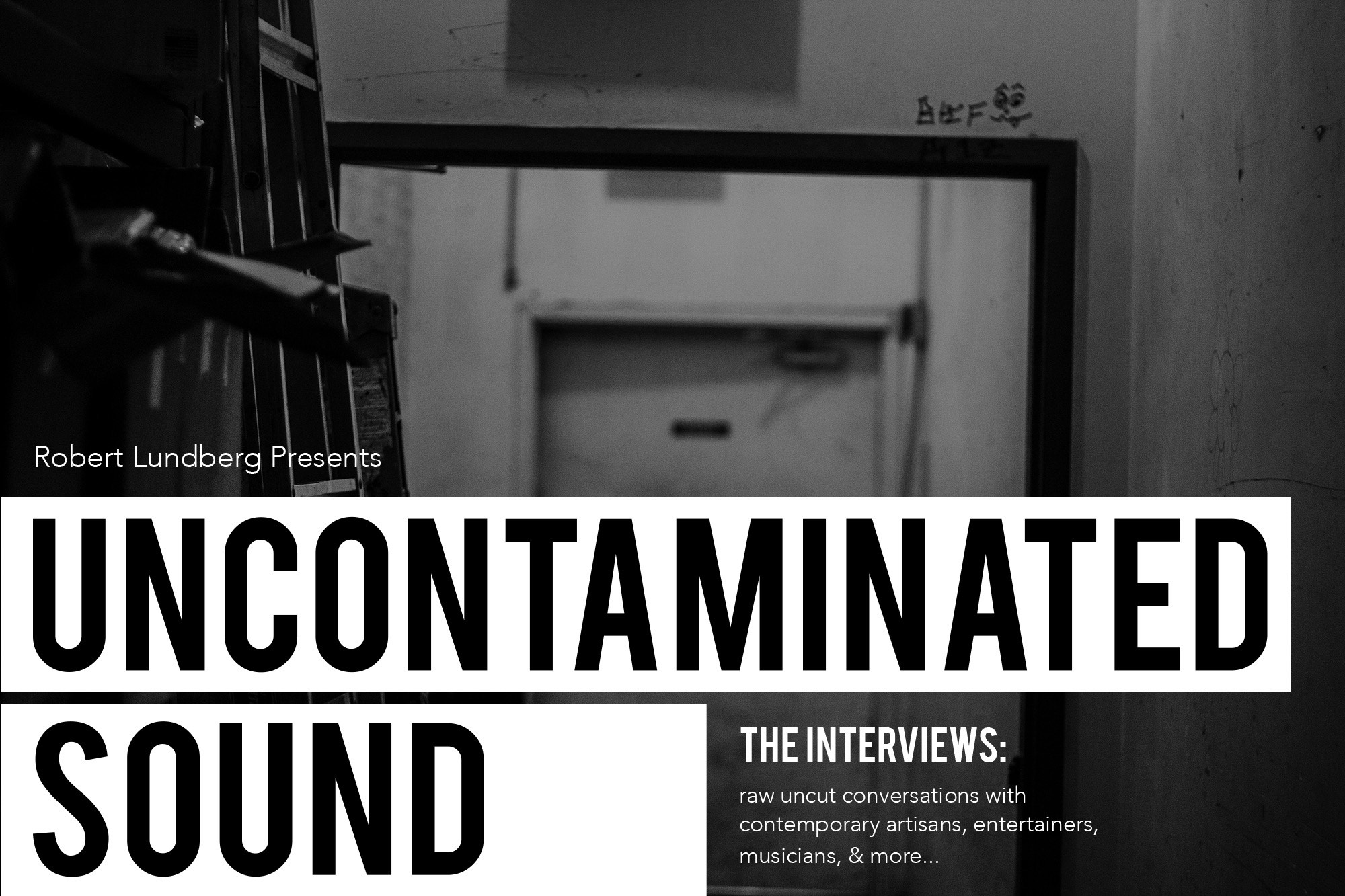Interviews
Danish Black Metallers Solbrud Recount that Time they Recorded a Live Album in a Water Tower
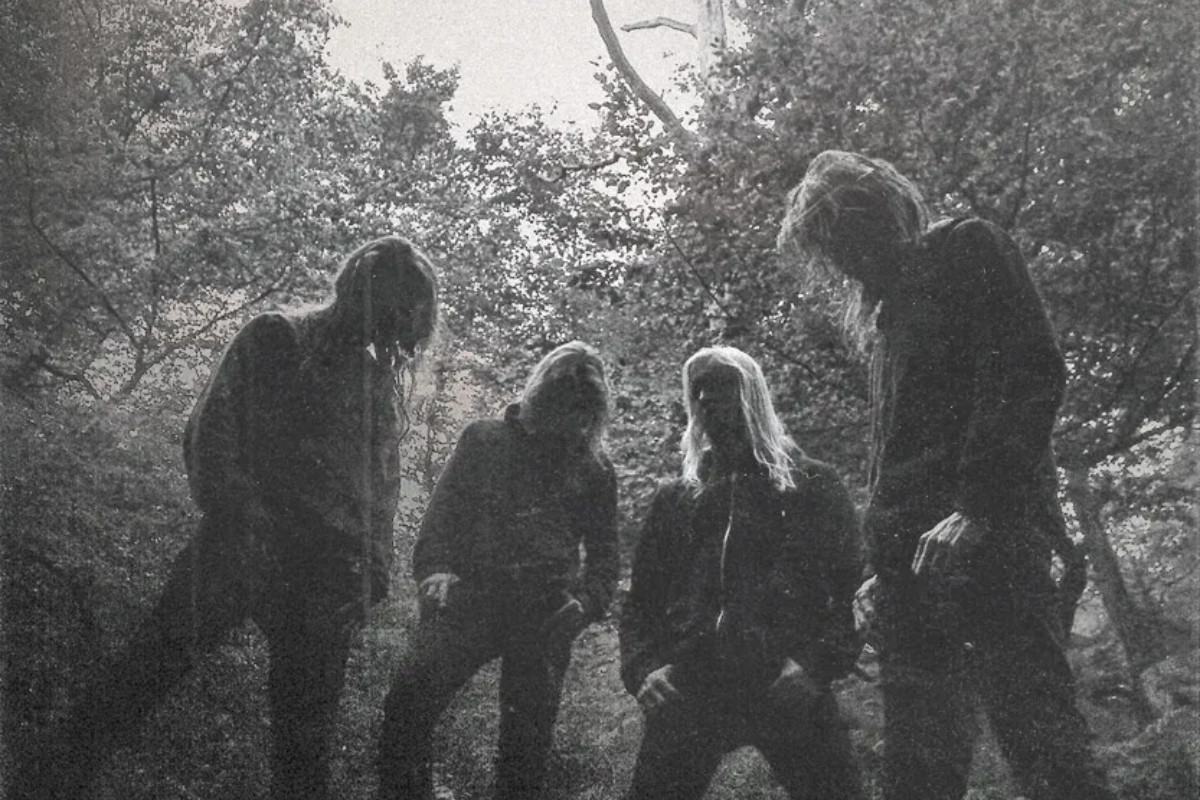
Levende I Brønshøj Vandtårn. Translated into English, this means “Live at the Brønshøj Water Tower” and not only is it the name of Solbrud’s new album, it’s a no-frills description of the contents and setting of said album. No, my friends, your eyes aren’t playing tricks on you. Back in the winter of 2019, the Copenhagen black metal band took two nights and recorded a live album in a 30 meter tall, concrete water tower contending with sub-zero temperatures, the structure’s 15 seconds of natural reverb, a film crew documenting the performance for a live DVD and Flemming Rasmussen, you might recognize his name from the back of Metallica’s greatest works, in the post-production chair along the way.
On the back end, the result is one of the most unique recordings you’ll stumble across and a further indication of how creative live music can get and how much it’s missed. We were nothing but curious about this entire project so we fired off a full-bodied email inquiry to which guitarist Adrian Utzon Dietz responded in kind.
Where did the initial idea for playing a show inside a water tower come from? How long was this plan in the works? How long did it take to scout for the location and were there other spots under consideration?
Adrian Utzon Dietz: “It was our Danish booker, Anders Wind/Bullet Booking who first brought up the suggestion and contact for the Brønshøj Water Tower at some point in early 2019. Upon looking up the features of the tower online, 15 seconds of reverb didn’t exactly look like the best idea on paper and also something likely to put our sound guy out of his good mind. A while later, our drummer and guitarist arranged to go have a look at the place for ourselves on a sunny day. Upon entering into this bleak, all-grey cauldron of raw, textured concrete beams towering some 30 meters above us, lit only by a few rays of daylight traversing from circular windows along the street side, the visual appearance of the place was awe inducing enough on its own. Within seconds, we got a pretty good idea of the sheer gravity of this tower’s reverberating properties, and very quickly decided, hell yeah, we’re just gonna do this no matter what!
The plan to perform there might in fact have scared off our regular sound guy at the time, at least we didn’t manage to arrange with him to have a look at the place and he was booked for other projects on the concert dates, so we had to bring in a new sound guy for us (Marcus Ferreira Larsen/No Master’s Voice) who hadn’t done live sound for us previously. Marcus suggested we also bring in mutual friend and lights technician, Isak Koppel Levy to help amplify and control lighting arrangements for the shows, and so we headed out to have another look at the tower and discuss the possibilities with these engineers so they could get an idea as to what equipment we’d have to rent in for the show.
Initially, we had planned for just a single concert and were afraid we had set the ticket prize a bit too high while just barely covering the production costs. But the first night sold out within hours and before we even got to put up the first concert poster in town, we arranged and announced the second performance the following night which sold out just as fast. The fact that we had two shots at nailing the songs for a live album convinced us to try and go for it and the album is a combination of the best takes from both nights.”
Did you have to do any sort of arranging with the city of Copenhagen as far getting a special permit to play a show on what I assume is city works property? What did you have to take into account for logistically and with regard to the band’s set up and live sound that you normally wouldn’t have to in a regular venue?
“The tower is owned and managed by the Copenhagen municipality under some cultural department and used now and then for art installations and projects, and there have been a handful of more experimental concerts there before. Basically we just paid for renting the tower for the two nights in question and all the rest, advertisement, planning, economy, equipment, hiring photographers, and video guy, beverage bar, loading, and so on was handled by ourselves with a little help from friends, our engineers and our booker.”
How did the people in attendance react to attending a show in such a unique setting? Playing shows in unconventional locations is nothing new for the DIY punk/hardcore scene, but not so much in metal. What responses or reactions did you encounter from those who were forced to make the adjustment from club/venue to not-club/venue?
“Yes, we’ve done a number of unorthodox shows before, among other places and in different churches around Denmark and it appears to be something that our audience really embraces and appreciates. To have a different and aesthetically unique location serves as an amplification of the musical space and elevates the experience for ourselves and the listeners alike. The church shows were filled to maximum capacity (there’s gotta be something about playing black metal inside a church that’s just right and a little wrong at the same time) and we heard of people jumping through the windows to get in the first time around.
These spaces seem to also induce a more solemn atmosphere within the audience and how they interact. Our concerts are mostly absorbed by a somewhat static audience; there’s hardly ever any moshing and if someone’s drunk or talking loudly during one of the quieter parts, it’s totally out of place. We had also stated in advance that we were going to record these concerts and encouraged people to remain somewhat quiet. The result of this was that people were almost too quiet out there, afraid to cheer at the wrong time, which is why you hardly hear the audience on the record until the end of two of the songs.”

Artwork for ‘Levende I Brønshøj Vandtårn’ by Solbrud
How about your own experience and adjustment? Taking into account the acoustics, sound, temperature, film crew, etc., how do you feel your performance fared that evening?
“It’s certainly one of the most memorable shows in the books, now that there was also so much extra work involved with the whole preparation, recording and post-production for the release. The acoustics were simply out-of-this-world incredible; you know, reverb on an effects unit or a guitar amplifier is super great and something we cherish a lot musically, but this, true physical manifestation of huge natural reverberation, greatly amplifying and prolonging even the faintest and indeed the loudest of sounds alike, and you feel how it changes as you move inside the space, it’s really something else entirely and something you just have to experience on your own.
We hadn’t really thought much about it in advance, but the concerts were in late November the temperature out there was goddamn freezing, just above zero. And we had to stay there the entire weekend to prepare all the setup and soundcheck and get everything as right as we could for the performance and recordings with only a small shed outside with an electric radiator to get a bit of warmth and food now and then. Very cold turned also our instruments and over the course of the weekend this affected the tuning so we had to retune over and over, and it certainly didn’t make it any easier to play lead parts with cold fingers on freezing steel guitar strings. Under all these circumstances we’re satisfied with the way our performance turned out and with the successful reception of the album these days it’s certainly got us thinking, great, people really got it, how can we top it off the next time around?”
Were these the last series of shows you played before the world went into COVID shutdown?
“Yes, the water tower concerts were in fact the last ones before the whole shutdown around March last year. But we got to play just a handful of local shows in 2020 in front of sitting audiences, and one of the even without an actual audience present, as it was instead being filmed and streamed to people at home. We had also lined up a handful of Scandinavian shows just around now in the wake of this release, but of course these had to be cancelled as well. We really had no idea whatsoever as to how a live album from us would be received generally, but from what we can tell these days it appears to have been worth the effort.”
Did the time afforded by COVID allow for you to work on the audio/video package for the new release when you weren’t originally expecting to have the time to do so? Was March 26th supposed to be the release date all along?
“We might have had an idea that doing a live album would have been somewhat less time consuming than a regular studio-recorded album, but quite the contrary proved to be the case this time; finishing off all the track edits, the whole sound mix, the whole video part and having the artwork do the whole thing justice was quite a large workload. Most of 2020 will be remembered as this bummer year where all we really did was work endlessly to finish off that live album. In fact, the first plan was to have been able to put out the release one year earlier and kick off our big tour in April 2020 with Grift, Uada, and Velnias with the live album on the merch table, but as mentioned everything took way longer than expected and even now the vinyl edition wasn’t ready in time for the release date still.”
What was the experience like of having Flemming Rasmussen master an album of yours for the second time? Do you ever pinch yourself, thinking, “Man, the guy who engineered some of the greatest albums in the history of music is working on (and nitpicking) our stuff?”
“Apart from being a superb and very professional studio and mastering engineer, Flemming is a great guy, super-energetic and down to earth. Back when he mastered (previous album) Vemod for us in 2017, his studio was located up north with its own bar, small stage, and basically one large wall full of Metallica gold records and tapes, which yeah, we had to have an extra look at and snap a couple of Instagram-worthy shots for good memories. The first time around he played us some of the original isolated tracks from ‘Bohemian Rhapsody’ and some Beatles bass tracks and stuff like that he had laying around too. Not that he tracked those albums himself, but it must be some insider thing that high-end producers trade tracks like that with each other for kicks and impressing dudes like us.
So that was kind of a rock n’ roll moment which sent shivers down our spines along with thoughts of early air guitar moves to ‘A Night at the Opera’ in the boys room 25 years ago. His Copenhagen studio is slightly smaller, but has a great deal of really advanced equipment that goes beyond our understanding and three or four different sets of big ass speakers, along with the beautiful worn-wooden-panel legendary ‘70s analogue mixing desk used to record lord knows how many landmark albums with his hands on the controls. Flemming is a total metalhead and upon listening through the complete mastered Levende I Brønshøj Vandtårn, he simply remarked, “That’s quite a statement you’ve made there.’”
At the same time, I noticed that you’ve recently been the recipients of a healthy share of accolades and awards from even the mainstream Danish/Scandinavian press and such. Does that surprise you considering the sound and scene you originate from?
“Yes, especially the first times around we had certainly not seen those awards and nominations coming, let alone even given much to their existence in the first place. Our focus has always been on cultivating the vision we have in creating music that resonates with ourselves, and the fact that metalheads, music journalists, and average Joes alike out there understand and are highly appreciative of what we do only makes it all the more rewarding and feeds our motivation to go on.”
When you compare the audio result of the show against what it was actually like being there that night, how faithful or accurate do you feel the album release compares to the experience in the water tower? What do you wish could have been done differently or better with the album release?
“There was a lot of extra sound out there on account of the reverb generated inside the tower’s structure. If you think there’s a lot of reverb on the album, well, there was a lot more out there at the show. At the same time, we were also surprised by how clear the band sounded in front of the PA, with the huge tail of echoes serving more as a massive backdrop behind our initial volume. The cool thing about being there in the audience was that you could circle the tower floor and move over behind the band which was placed around the center, and behind us the amount of atmospheric echo would be perceived somewhat more significant as the sound sources were further away. All instruments were close-mic’d and the ambient reverb was captured with a number of separate microphones along the narrow spiral staircase in the center of the tower, leading up towards the top.
What we did in the mixing process was dose the amount of ambient reverb depending on how much this or that section of the show could take. So, when you hear a slow part or just the drums or a guitar alone, the ambience is turned up well and if we’re all blasting through a fast part, it’s turned down slightly to clean up the sound a bit. As much as we’d like to actually experience how we sound like live to the audience, that complete experience remains somewhat of a mystery to ourselves, since we are busy playing on stage where the sound will always differ quite a lot from where we stand.
The setup and soundcheck process and the whole editing and mixing process was done quite fast and well and we are very satisfied with the massive and well-rounded result that Marcus was able to capture and mix from the recordings. If we should ever attempt to do something similar again in the future, we have more experience now and believe we can do better still if we set off more time for everything and maybe put a couple more microphones on stuff like the guitars amps.”
Where does the desire and drive to explore stuff like playing in off-the-cuff venues, extensive packaging options, etc. come from?
“It’s something that we’ve picked up over the years and there’s something about the music we write and how we perform that goes really well with out-of-the-box places. Having a good experience with one unique project makes us go, ‘Ok that was a lot of work ,but it was fun too. We’ll think of something bigger or cooler we can do next time.’
Regarding album covers and the packaging of our physical releases, well, in these digital times where everyone might as well just listen through streaming only, it seems ever more important for us to remain true to the visual aesthetic and to the process of buying a record because its cover speaks to you, not knowing how it will sound like, putting it on your stereo and hearing it for the first time while looking at artwork that serves as a good visual manifestation of the music. If anything, we have a responsibility to keep the formats alive as the truest and most complete forms of recorded music by making it worth the fans every penny and it’s also no secret that it’s not exactly the musicians who are getting paid from Spotify subscriptions.
A couple of us used to play a lot of punk and the early Solbrud foundation was in fact an offspring of a short-lived thrash/punk band that died off when the bass player left. For the first six years of the band’s existence, we rehearsed in a squat sanctuary known as The New Youth House in Copenhagen and here we learned how to get things done the right way ourselves. When we started out it was a bit like black metal wasn’t being taken very seriously, so we had to set up our own shows to get to play at all. Essentially based upon black metal sound and playing techniques, but lovers of many other forms of music as well, yes, we think it’s way more interesting to explore what we can do with Solbrud, as opposed to what can not be done within certain genre traditions and expectations.”
-
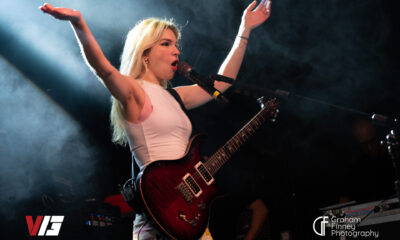
 Alternative/Rock7 days ago
Alternative/Rock7 days agoThe Warning Shake the Foundations of a Sold-Out Leeds Stylus [Photos]
-
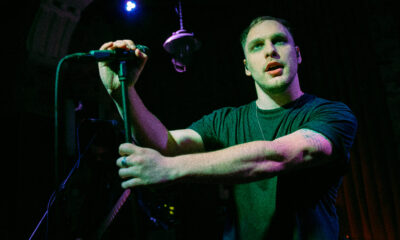
 Alternative/Rock15 hours ago
Alternative/Rock15 hours agoThe Cruel Knives Headline Top Night of British Rock at Manchester’s The Lodge [Photos]
-

 Music2 weeks ago
Music2 weeks agoTake That (w/ Olly Murs) Kick Off Four-Night Leeds Stint with Hit-Laden Spectacular [Photos]
-

 Alternative/Rock7 days ago
Alternative/Rock7 days agoThe V13 Fix #011 w/ Microwave, Full Of Hell, Cold Years and more
-

 Features2 weeks ago
Features2 weeks agoTour Diary: Gen & The Degenerates Party Their Way Across America
-
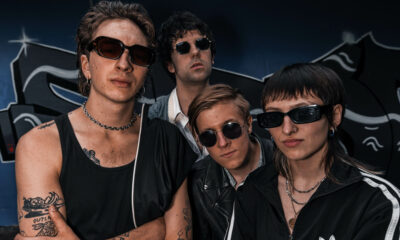
 Indie7 days ago
Indie7 days agoDeadset Premiere Music Video for Addiction-Inspired “Heavy Eyes” Single
-
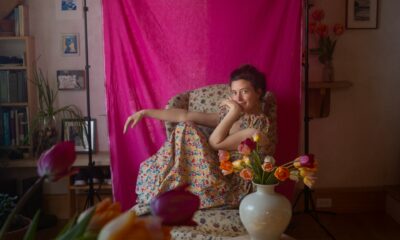
 Folk1 week ago
Folk1 week agoKatherine Perkins Strikes the Right Tone with Her “Hold On” Music Video Premiere
-

 Country1 week ago
Country1 week agoBrooke Ashton Chats About Her “Someone” Single, Creative Process, and More!

